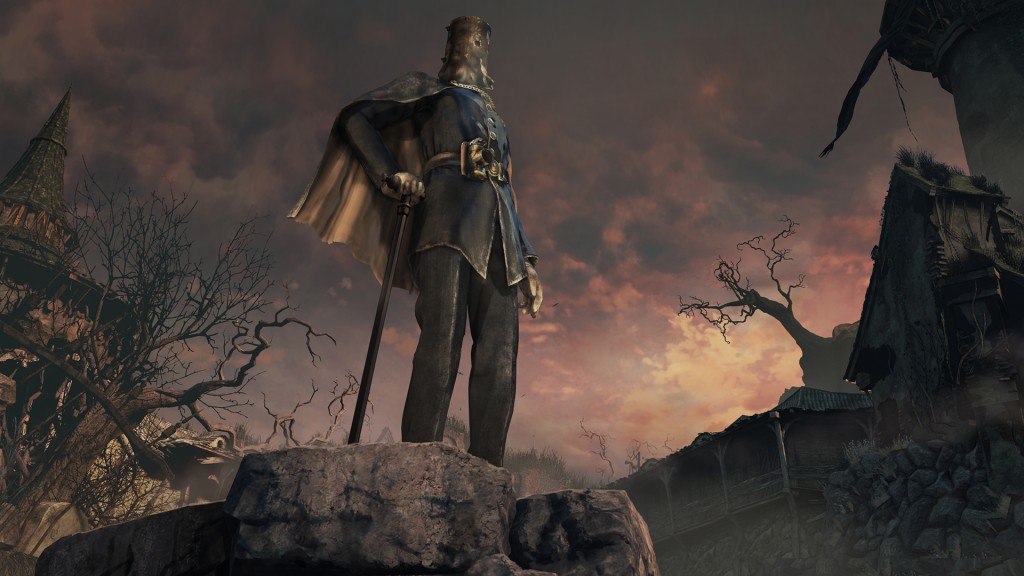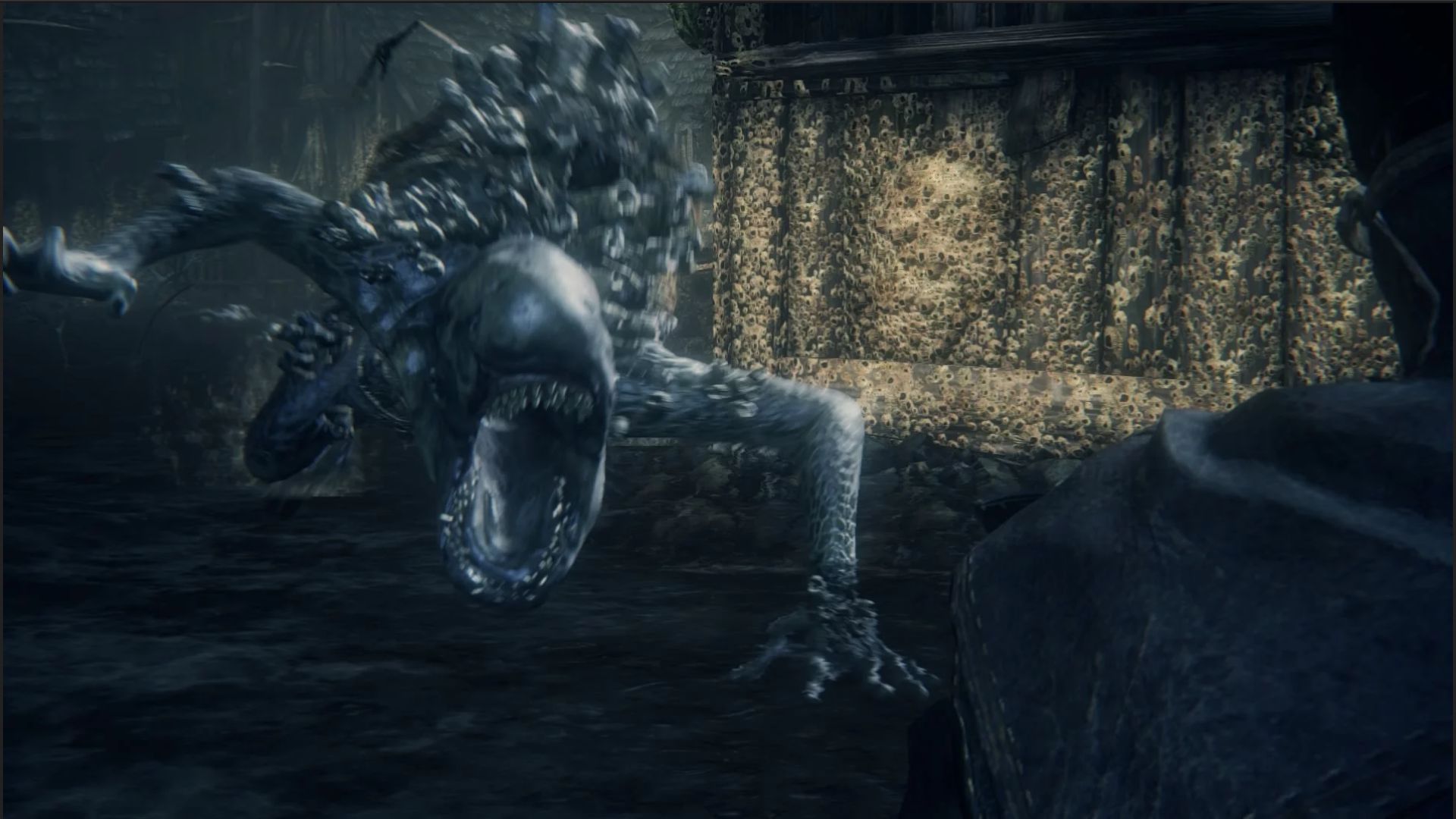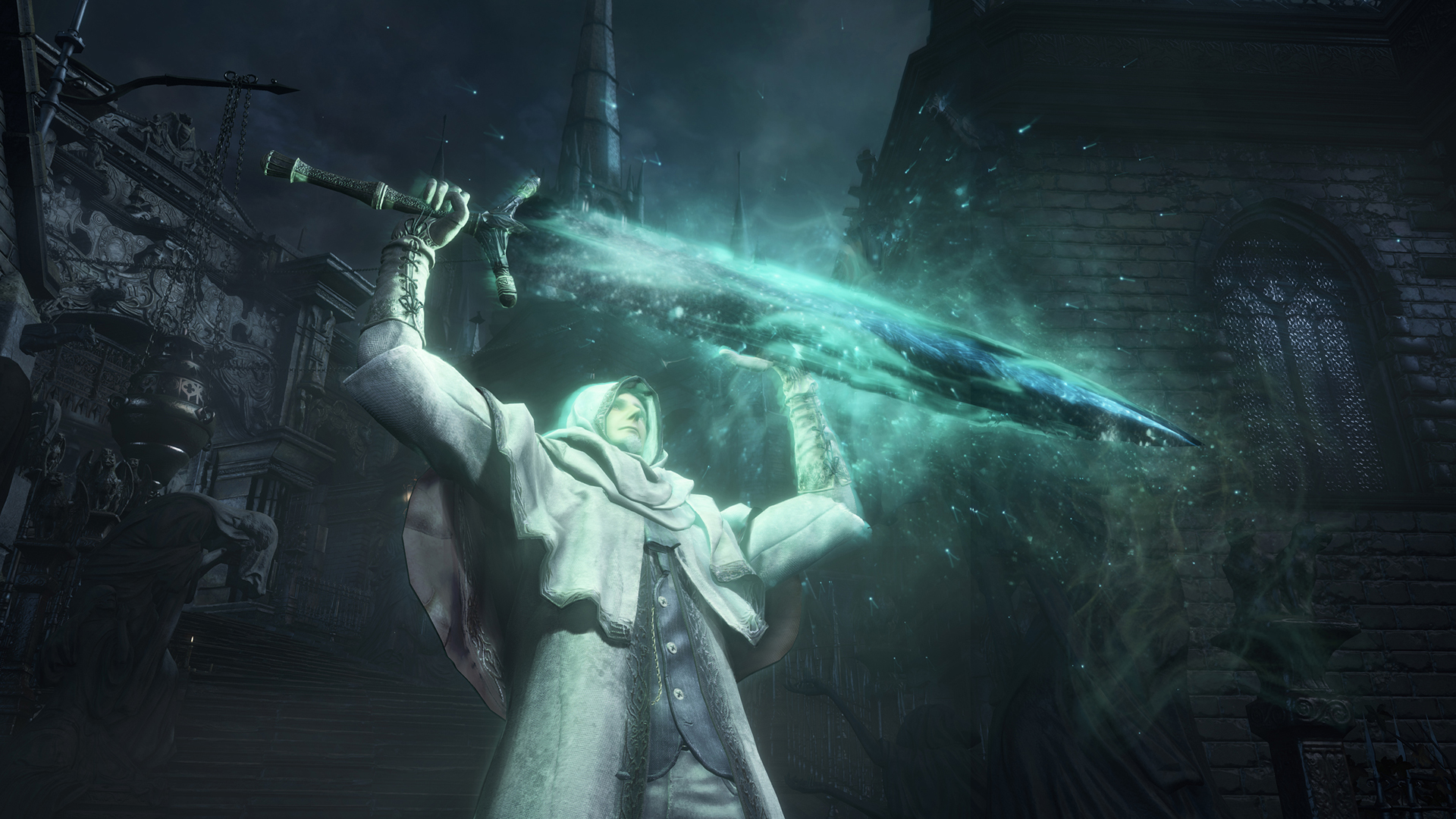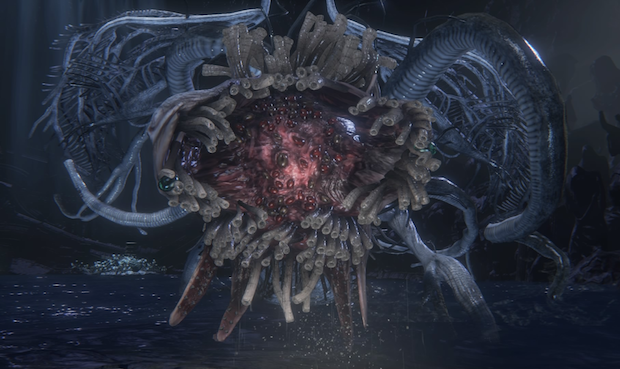
The year is 2015, and it must have been around the holiday season when I first played Bloodborne. It was one of the first games I tried on my then-brand-new PS4. Having completed most of the game’s bosses, I find myself in a deathly duel against the abomination that is Orphan of Kos. Each loss against this unpredictable monster knocks me hard on my knees. Yet I refuse to falter, and slowly I find solace in this seemingly never-ending loop of progressive defeat as each attempt brings me closer to my goal. To knock this deadly menace down once and for all.
And that’s when the realization hit me like a freight train. This is one hell of a game. Ten years have passed since I first beat Bloodborne, and it is a game that I find myself coming back to time after time. And it’s not just because it’s so damn good, but because in the many years that have passed since – we haven’t seen anything quite like it.
Sure, we have seen developers trying to capture the essence of Bloodborne with games like Lies of P or Thymesia. FromSoftware has expanded its Souls formula to the open world and beyond with Elden Ring, but there’s nothing that scratches the same itch quite like Bloodborne. But what is it that FromSoftware and Miyazaki have done that makes it so unique, so special?

Well, there are plenty of reasons as to why that is the case but chief among them has to be the art direction. FromSoftware has been a pioneer when it comes to designing dystopian worlds that are striking to look at, but the Victorian London-inspired town of Yharnam ranks as one of its best works to date. It’s a unique blend of H.P. Lovecraft and Victorian-era London, and the best way to describe this twisted world is the culmination of your worst nightmares coming true.
Tall arching clock towers populate the skyline, dense settlements dotted with turned villagers, and a blood-red moon makes you uneasy at the core. Enemies are outright daunting to look at, especially non-human enemies like werewolves or tentacular monsters in particular. Drools of blood and nasty saliva can be seen at the ends of sharp teeth, blades and weapons get covered in enemy blood.
The weird deformations of bosses like Cleric Beast or Ludwig are almost beyond comprehension, giving the art direction a rather dreamy feeling which is perfect considering we are indeed a part of a Hunter’s Nightmare. But what’s really interesting about this world is that even in times of extreme peril, there are pockets of hope scattered throughout. You might come across a little girl waiting for a father to come back home, or maybe even come across a serene view that will have you gawking at it for a good few minutes.
Bloodborne’s expert usage of a darker color palette dominated by shades of black, grey, and purple gives it a unique visual identity that fits its vibe and the gameplay. The game also trades geographical variety for consistency. Unlike the developers’ prior works where the adventure takes you through giant castles to mystical forests and underground swamps, Yharnam is more restrained and grounded giving it a more believable look. Of course, the looping level design that is at the heart of these games is present in spades – making exploration a constantly enjoyable and rewarding experience as you discover new shortcuts and connecting paths.

Horror in Bloodborne doesn’t just come from the dark visuals or fierce creature design, it’s present in the beating heart of the game. Much like FromSoftware’s past works, Bloodborne is a demanding game with a steep learning curve and little hand-holding. Right from the start, you are put up against a fight with a werewolf with nothing but your bare hands – setting the right example for what’s to follow.
Bloodborne excels at providing a sense of mechanical fear. You don’t just fear how the enemy looks, but also how it functions. Enemies move in an erratic fashion, stunning you with heavy hits and following up with a flurry of attacks that can knock you down without much effort. They also hide around corners waiting for opportunities to ambush you at unsuspecting parts of the map, which in turn forces you to carefully trot through claustrophobic corridors and inviting tunnels.
Mistakes here can be quite costly, as every death will knock you back to the last lamp with all your XP (or Blood Echoes as Bloodborne calls it) lost at the spot where you died. These lamp posts and checkpoints are also scattered quite far apart, and there’s a palpable sense of tension pervading each step when you are running low on supplies and thousands of precious Blood Echoes are at stake.
No Souls game is complete without a good selection of bosses, and Bloodborne obviously doesn’t disappoint in this regard. Right from Father Gasgione to Vicar Amelia to Gehrman, Bloodborne’s suite of bosses is a pure test of mettle where you are pushed to the breaking point time after time again. While there are more average bosses in the base game as I would have liked, the game makes up for it with the Old Hunters DLC. Orphan of Kos will have you throwing controllers, Lady Maria is a graceful hunter who will knock you down pretty quickly, and Ludwig’s Moonlight Sword attacks will leave you speechless. Chef’s kiss, to be honest.

What makes Bloodborne so special is also how it has a wonderful sense of flow to its gameplay. The careful dance of dodging and attacking that players need to master has its unique rhythm, and the game gives you some leeway with the ability to regain lost health by attacking back at your enemies in quick succession after getting hit. Blood vials are the supplies that replenish your health, and instead of being refueled at checkpoints – they can be purchased at a shop and dropped by regular enemies.
This is a very important design decision that changes how you view the game. In Dark Souls, you could only make a set number of mistakes before you run out of flasks – but here, that budget for making mistakes is much bigger. Once you master the aforementioned dance of strikes, you can maintain that rhythm much longer, and explore more areas aided with a regular replenishing of your vials.
The best form of design is minimalistic, and Bloodborne is a game that adheres to this school of thought. It’s an RPG at its core where arbitrary stats and numbers decide much of what you can and can’t do, but it strips down the complexities of stat management and builds crafting to a much lower level which makes the core gameplay a lot more enjoyable.
Weapons in Bloodborne aren’t a dime a dozen, and you wouldn’t find a zillion armor sets or magic spells scattered around every corner. It’s quite convenient to start with a certain weapon and continue upgrading that particular build and related stats without feeling underpowered at any point in the journey. That doesn’t mean that there aren’t any options for trying out new builds or experimenting with your character, but the needless clutter around build crafting and upgrades has been simplified – making interactions with the core gameplay loop much more meaningful this time around.
As can be deferred from these discussions, a lot of what makes Bloodborne so special and so unique is the precision in the designs. Be it the flawless art direction or the rhythmic nature of its gameplay, the design elements at play work extremely well with one another resulting in a game that rarely falters in terms of quality. It’s very clear that FromSoftware knew what it wanted this game to be, and it inculcated everything that would make that vision come true while stripping away all unnecessary clutter that didn’t contribute to that vision.

It’s almost poetry at motion at times, and it stands tall as one of the best games of the last generation. Countless rumors and reports have pointed that a remaster, a sequel or a port has been in the works – but nothing concrete has come out since then. And that’s a shame because Bloodborne is the perfect candidate for such a treatment considering its age and the faithful community of fans.
We have seen games like The Last of Us or Until Dawn being remastered or outright remade for PS5 and PC, but nothing of the same sort has been done for Bloodborne. Not only would the world of Yharnam get a fresh coat of paint with a remaster, but the combat loop would also benefit greatly from a higher framerate. But, I guess all these requests are falling on Sony’s deaf ears.
One can only hope, however. Bloodborne is definitely a game that you should try out if you haven’t already. The Souls series might have moved forward to greener pastures, but Bloodborne offers an experience like no other.
Note: The views expressed in this article are those of the author and do not necessarily represent the views of, and should not be attributed to, GamingBolt as an organization.














